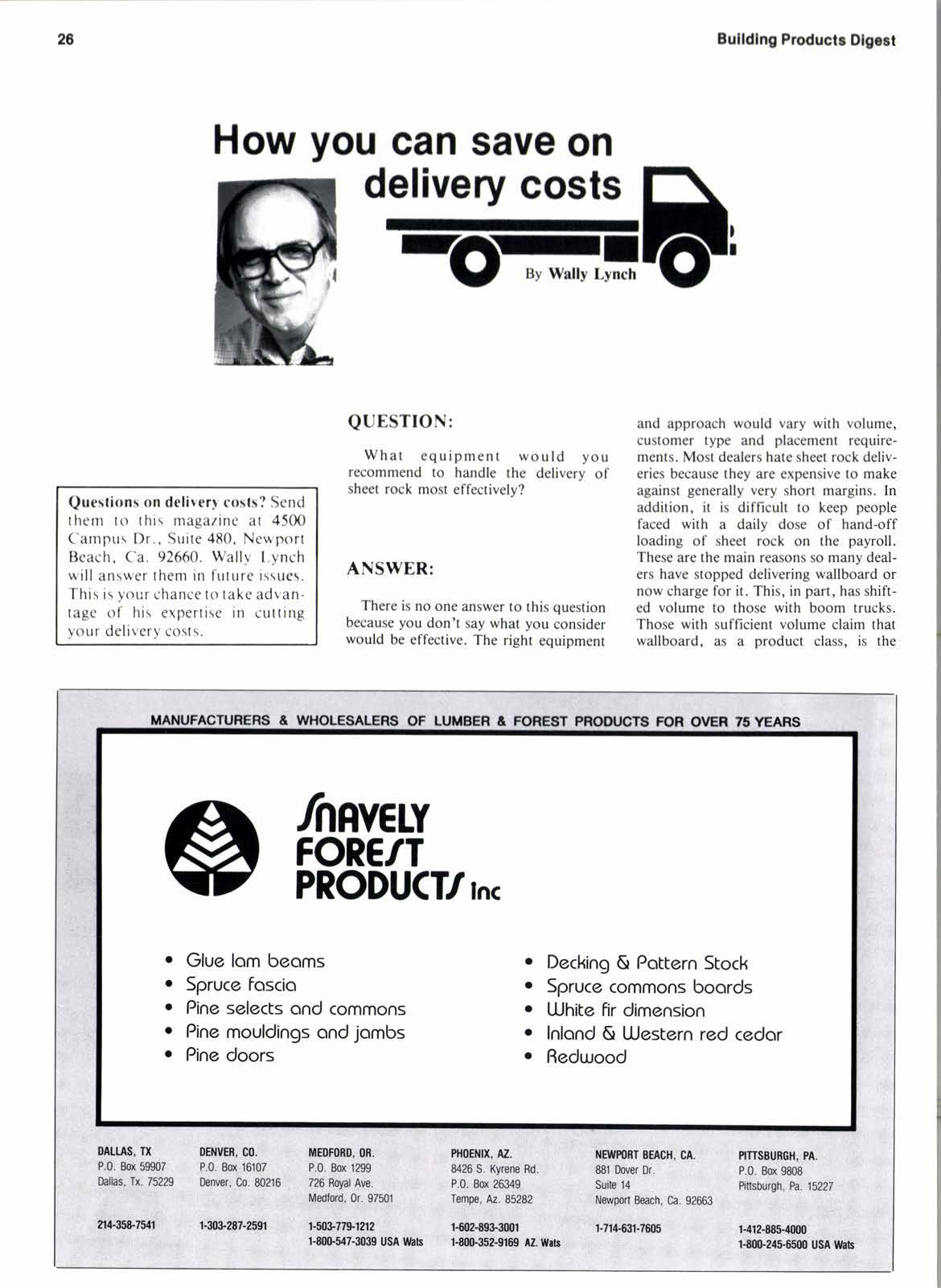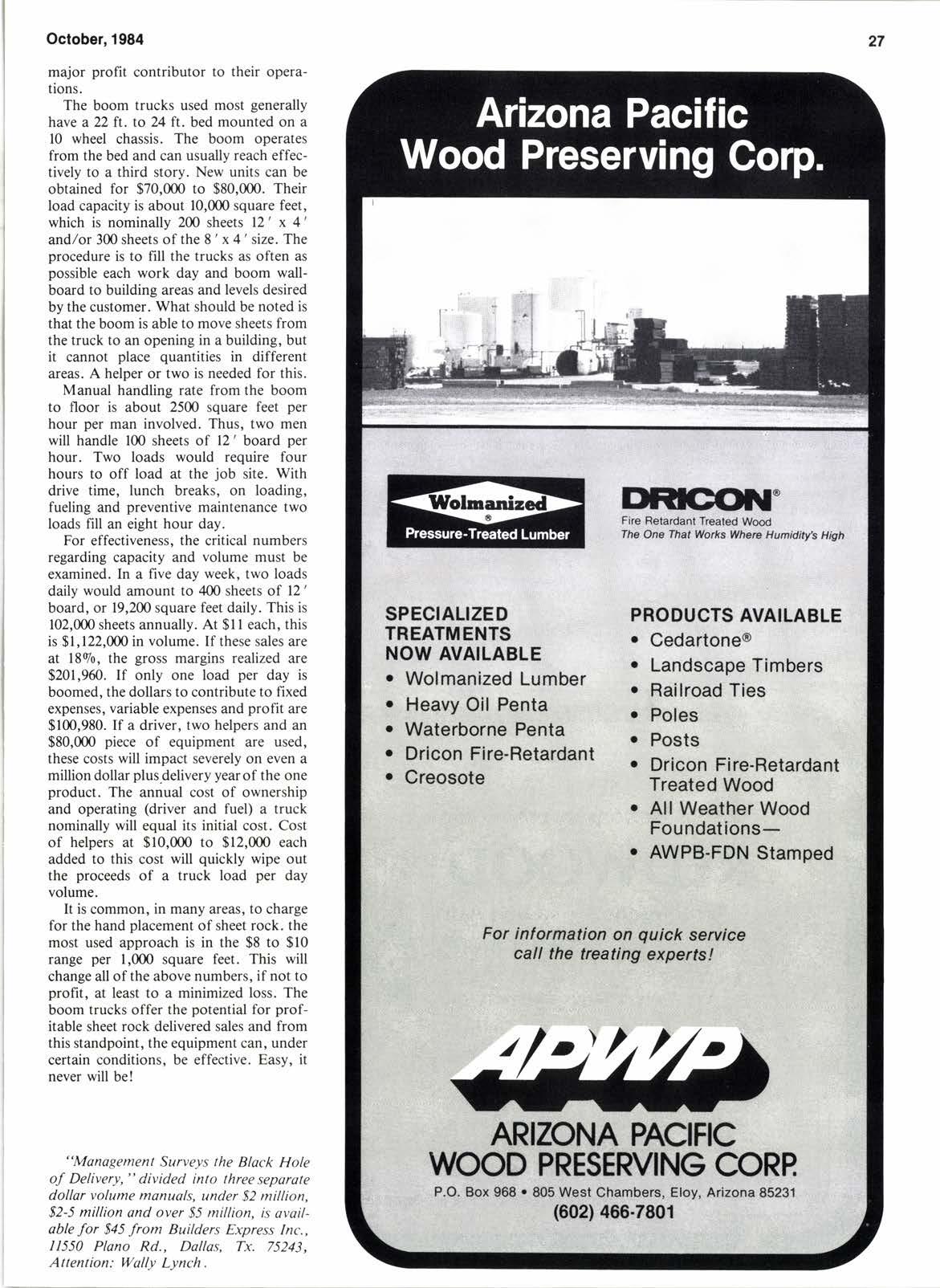
2 minute read
How you can save on delivery costs ffi a,
QUESTION:
What equipment would you recommend to handle the delivery of sheet rock most effectivelv?
Queslions on deliverl cosls? Scnd t henr to t his magazinc at 4500 (-ampus Dr., Suite 480, Ncwport Beach, Ca. 92660. Wallv l.ynch w ill answer them in future issues. This is your chance ttl take advantage rlf his expertise rn cutting vour deliverv cost s.
ANSWER:
There is no one answer to this question because you don't say what you consider would be effective. The right equipment and approach would vary with volume, customer type and placement requirements, Most dealers hate sheet rock deliveries because they are expensive to make against generally very short margins. In addition, it is difficult to keep people faced with a daily dose of hand-off loading of sheet rock on the payroll. These are the main reasons so many dealers have stopped delivering wallboard or now charge for it. This, in part, has shifted volume to those with boom trucks. Those with sufficient volume claim that wallboard, as a product class, is the major profit contributor to their operations.
The boom trucks used most generally have a 22 ft. to U ft. bed mounted on a l0 wheel chassis. The boom operates from the bed and can usually reach effectively to a third story. New units can be obtained for $70,000 to $80,000. Their load capacity is about 10,000 square feet, which is nominally 200 sheets 12' x 4' and/or 300 sheets ofthe 8'x 4' size. The procedure is to fill the trucks as often as possible each work day and boom wallboard to building areas and levels desired by the customer. What should be noted is that the boom is able to move sheets from the truck to an opening in a building, but it cannot place quantities in different areas. A helper or two is needed for this.
Manual handling rate from the boom to floor is about 2500 square feet per hour per man involved, Thus, two men will handle 100 sheets of 12' board per hour. Two loads would require four hours to off load at the job site. With drive time, lunch breaks, on loading, fueling and preventive maintenance two loads fill an eight hour day.
For effectiveness. the critical numbers regarding capacity and volume must be examined. In a five day week, two loads daily would amount to 400 sheets of 12' board, or 19,200 square feet daily. This is 102,000 sheets annually. At $l I each, this is $1,122,000 in volume. If these sales are at 1890, the gross margins realized are $201,9@. If only one load per day is boomed. the dollars to contribute to fixed expenses, variable expenses and profit are $1m,980. If a driver, two helpers and an $80,000 piece of equipment are used, these costs will impact severely on even a million dollar plus_delivery yearof the one product. The annual cost of ownership and operating (driver and fuel) a truck nominally will equal its initial cost. Cost of helpers at $10,000 to $12,000 each added to this cost will quickly wipe out the proceeds of a truck load per day volume.
It is common, in many areas, to charge for the hand placement of sheet rock. the most used approach is in the $8 to $10 range per 1,000 square feet. This will change all of the above numbers, if not to profit, at least to a minimized loss. The boom trucks offer the potential for profitable sheet rock delivered sales and from this standpoint, the equipment can, under certain conditions, be effective. Easy, it never will be!
"Management Surveys the Black Hole of Delivery, " divided into three seporate dollar volume manuals, under 82 million, $2-5 million and over $5 million, is available for $45 from Builders Express Inc., 11550 Plano Rd., Dallas, Tx.75243, Attention: lUallv Lvnch











